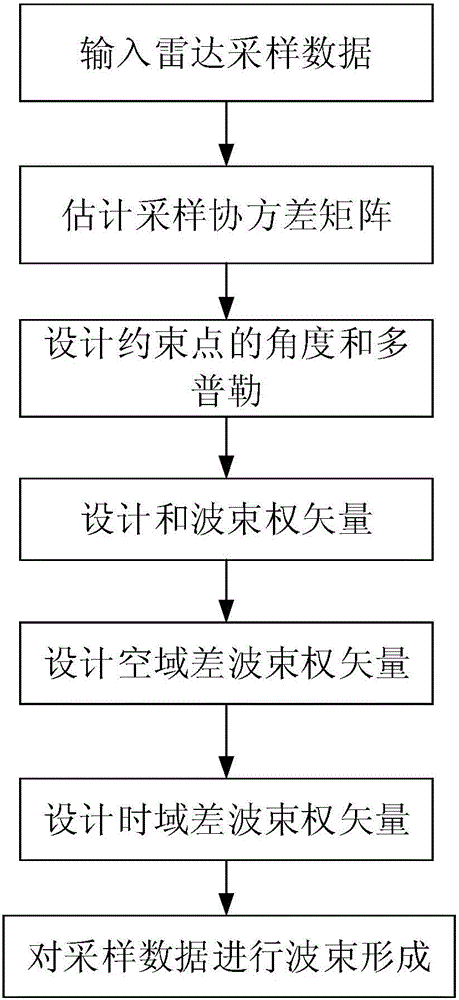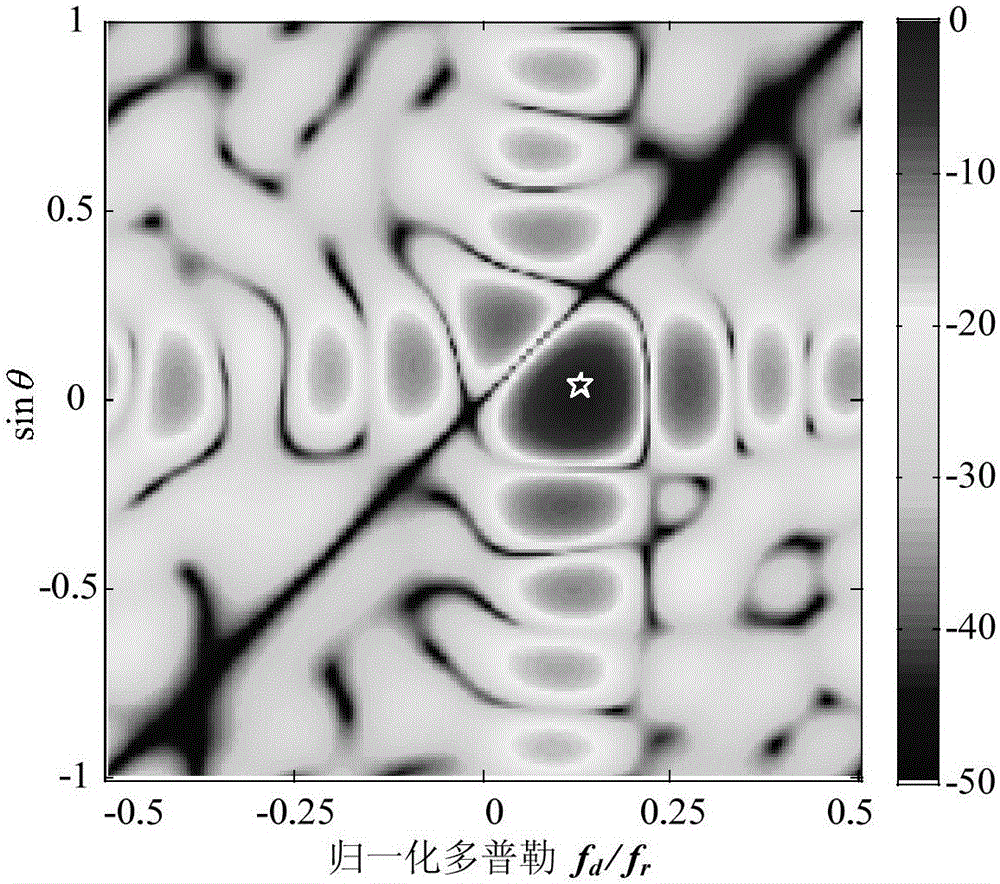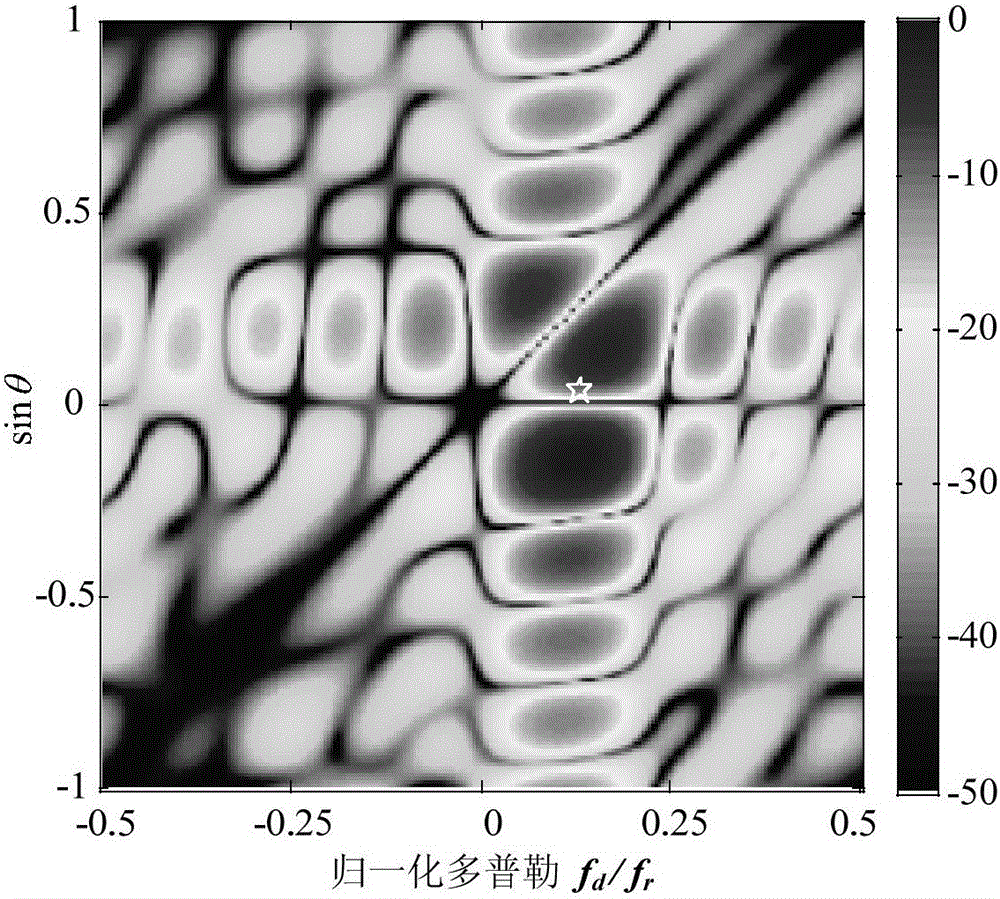A sum and difference beam forming method based on a space-time adaptive processing radar
A space-time self-adaptive, differential beam technology, applied in the field of signal processing, can solve the problems of main lobe response distortion and affecting single pulse ratio, etc.
- Summary
- Abstract
- Description
- Claims
- Application Information
AI Technical Summary
Problems solved by technology
Method used
Image
Examples
Embodiment Construction
[0044] The embodiments and effects of the present invention will be further described in detail below in conjunction with the accompanying drawings.
[0045] refer to figure 1 , the realization steps of the present invention are as follows.
[0046] Step 1: Input the sampled data X of the target detected by the STAP radar into the signal processor for space-time adaptive processing.
[0047]The sampling data X contains target, clutter and noise, and is composed of space-time snapshot vector x(p), p=1,...,L, where L is the number of sampled snapshots, and each space-time snapshot vector contains different Sampled data of antenna and different pulses.
[0048] Step 2, estimate the sampling covariance matrix according to the sampling data X
[0049] Taking the L space-time snapshot vectors x(p) in the sampling data X as samples, the sampling covariance matrix is estimated by using the maximum likelihood estimation method which is:
[0050] R ...
PUM
 Login to View More
Login to View More Abstract
Description
Claims
Application Information
 Login to View More
Login to View More - R&D
- Intellectual Property
- Life Sciences
- Materials
- Tech Scout
- Unparalleled Data Quality
- Higher Quality Content
- 60% Fewer Hallucinations
Browse by: Latest US Patents, China's latest patents, Technical Efficacy Thesaurus, Application Domain, Technology Topic, Popular Technical Reports.
© 2025 PatSnap. All rights reserved.Legal|Privacy policy|Modern Slavery Act Transparency Statement|Sitemap|About US| Contact US: help@patsnap.com



